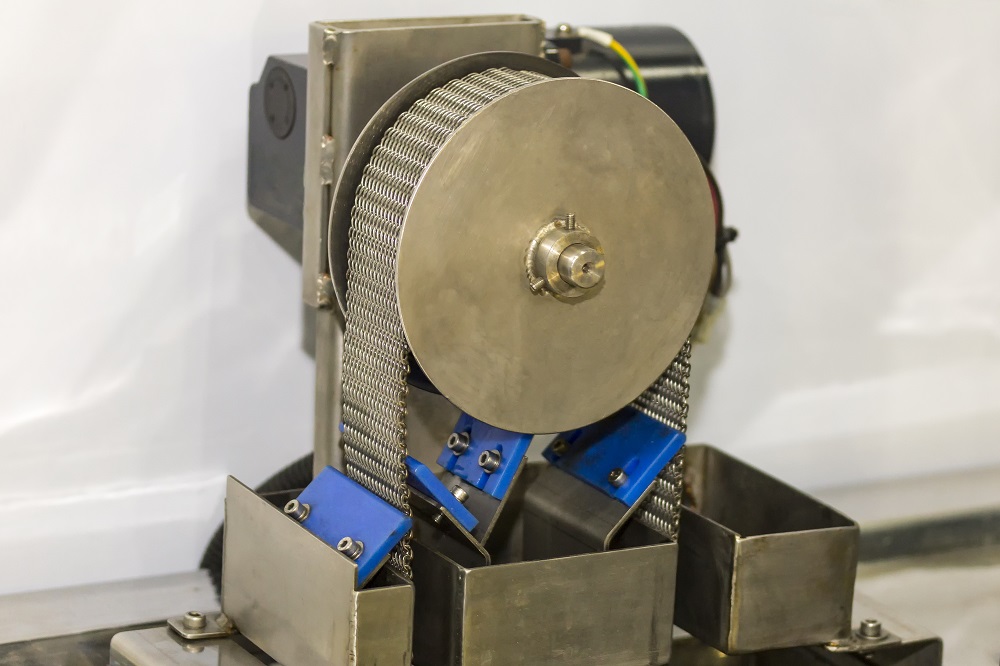Cutting fluid is the backbone of the majority of machining operations, responsible for cooling materials, lubricating cutting tools, flushing away chips, and providing corrosion protection. But, beyond the many benefits, there’s one pesky maintenance: tramp oil.
Tramp oil is a broad term for oils and other contaminants that mix with cutting fluid from standard, everyday use of machines. Things like rust preventatives on materials, hydraulic, and lubrication systems all contribute to tramp oil. The resulting build-up can create serious problems with productivity, part-quality, tool life, and the overall coolant and operator health and safety of a workshop.
What Causes Tramp Oil?
There are two primary ways tramp oil contaminates coolant. Lubricants from a machine’s spindles, ball screws, bearings, and slides might mix with cutting fluid and flow into the sump. Another source is from the workpieces — many stock metals include an oil-based coating to prevent corrosion, and if it isn’t properly washed off prior to machining operations, it will likely mix with cutting fluid.
Tramp Oil Removal Systems
There are numerous systems and techniques for cleaning contaminants out of cutting fluids — created for all types of machining operations and workshops.
Centrifuges

A centrifuge system is a machine that processes contaminated cutting fluid and spins at a high enough velocity that separates tramp oil or solid particulates from the coolant. The waste is discharged, leaving only clean coolant to be returned to the sump.
Low-speed centrifuge systems for separating solids and larger particles from coolants and oils capitalize on g-force to purify cutting fluids without the use of filtering media. High-speed centrifuge systems spin at a very high centrifugal g-force, so they can remove tramp oil that has become emulsified in coolant. These machines purify and remove particles as small as 0.1 microns.
Centrifuge systems are available in a variety of sizes, from small, portable units like Master Fluid Solutions’ Tramp Oil Terminator™, to large industrial units designed for plants with centralized coolant systems.
Coalescers

Coalescers are a type of oil/water separator system designed to remove tramp oils and solids from cutting fluids. They operate by utilizing plates to speed up the process of separating tramp oil and coolant. This happens due to density differences between the coolant and oils. Many high end coalescers also include filtration to remove solids from the coolant — all in one unit. During operation, solids settle at the bottom of the tank while oils rise to the surface to be drained. The clean cutting fluid between them is then channeled through weirs to remove additional oils and contaminants.
Skimmers
Unless it’s emulsified or dispersed within coolant, free tramp oil usually floats atop the fluid in the sump. Skimmers are standalone machines that remove free-floating tramp oil using belts, discs, and other components to pull contaminants out of the tank.
Other types of coolant management systems include recyclers and mixers. Because coolant management and tramp oil removal is one of the most important aspects of a metalworking operation, there are units that can fit into every type of shop.
Why Remove Tramp Oil?
Tramp oil isn’t just a nasty contaminant — it can actually damage your equipment with residues, slow down your operation by degrading coolant, and cost you money.
Better Tool Life
Clean and well maintained coolant will provide optimum tool life. Tramp oil inhibits the sump life, lubricity, and performance of cutting fluids — and can cause a decrease in tool life. Plus, the contaminated coolant can cause other issues such as corrosion, smoke, odors, and bacteria. All of these cost machine shops valuable production and increase costs.
Longer-Lasting Cutting Fluid
Tramp oil creates conditions ideal for anaerobic bacteria, which can quickly degrade coolant, requiring unplanned coolant changes and machine cleaning. Minimizing coolant use is one of the best ways an operation can save money, and removing tramp oil prevents waste and replacement frequency. Shops should especially look into machines that use a lot of maintenance oils for leaks.
Superior Part Quality
Clean coolant greatly increases cutting tool performance. This decreases the scrap rate and keeps material costs in check. Savings come from increased productivity, too. Clean cutting fluid leaves less residue on parts and requires less cleaning. Machined parts won’t have to be reworked as much, either.
No Need for Additives
Not only does tramp oil allow bacteria to grow, but it also increases the amount of foam produced during operation. Defoamers and biocides are often used to control pesky bacteria and foam. However, when tramp oil is removed from coolant, these additives are no longer necessary, saving time and money.
Better Shop Environment
Tramp oil can cause air quality issues within the plant during a high-speed metal cutting operation, burning and creating smoke and contributing to an unpleasant shop environment. It can also burn on the part creating difficult to clean residues. Bacteria growth associated with tramp oil can also cause odors. Removing tramp oil improves air quality and worker morale.
Unlock the Full Potential of Your Coolant
Tramp oil is unavoidable in a machining operation, but it’s easy to control with the right systems and processes. Investing in equipment and spending the time to keep tramp oil in check will yield better profits in the long run, creating a better, more productive work environment.
There are a variety of systems to choose from to match the size of any workshop. To learn more about tramp oil removal systems — and find the best one for your shop, call +1 800-537-3365 or email us at [email protected].


